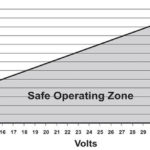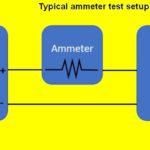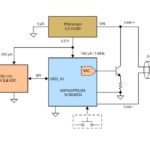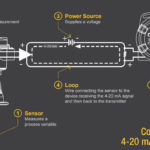 New Yorker Electronics has announced the release of the new SSA Smart Current Sensor series from Riedon. Riedon’s new Smart Shunt SSA combines low-impedance manganese shunt resistance, a high-precision insulated amplifier, and an isolated DC/DC converter.
New Yorker Electronics has announced the release of the new SSA Smart Current Sensor series from Riedon. Riedon’s new Smart Shunt SSA combines low-impedance manganese shunt resistance, a high-precision insulated amplifier, and an isolated DC/DC converter.
Riedon’s SSA family of Isolated Smart Current Measurement Technology consists of four current ratings: 100A, 250A, 500A, and 1000A. This makes them suitable for use in high-power applications, where harsh conditions may be an issue, such as elevated temperature levels, heavy vibrations, and electromagnetic interference (EMI). They are therefore ideal for use in electric vehicle (EV) and hybrid-electric vehicle (HEV) traction inverters, AC/DC converters, uninterruptible power supplies, renewable energy generation sites, and smart grid infrastructure.
The SSA is insensitive to magnetic fields, and, unlike Hall-effect sensors, can be freely positioned without the need for additional shielding. This allows for more flexibility during development. These next-generation current sensing modules combine the attributes of conventional passive shunt resistors with those normally associated with considerably more expensive and bulky closed-loop Hall-Effect current sensors. Each featuring a built-in precision amplifier, they offer reinforced electrical isolation (up to 1500VDC), alongside industry-leading levels of stability and accuracy. Shunt-based systems are generally easier to implement because they are more linear and offer higher current measurement accuracy than Hall-based methods.
The new SSA devices feature 1500 VDC/1000 VAC RMS reinforced isolation, ± 0.1% initial sensing accuracy, ± 0.1% linearity over a current range, unipolar power supply, differential analog output, and 300kHz bandwidth. The series offers a differential output and can be connected directly to most microcontrollers (MCUs). According to Riedon, it is currently the industry’s only amplifying active shunt with an analog output.
With far less susceptibility to temperature drift, the need for routine calibration can be eliminated. They also have a rapid response time of less than 1.5μs. The amplified analog output and integrated protection enable these current sensors can be placed on either the high or low side of a circuit, thereby enabling easy integration. Physical construction consists of a power bus bar with an isolated sensor housing encased around the center of the bar. A JST JWPF series four-pin connector provides the interface to (1) power, (2) ground, (3) +Vin, and (4) –Vin for the encapsulated sensor. The corresponding mating connector is JST type J04R-JWPF-VSLE-S (housing) and SWPR-001T-P025 (contact).
The differential output effectively negates the Thermo-EMK and eliminates all associated deviations that arise due to a temperature gradient above the block. Unlike other shunt solutions, the fully UL94-V0 encapsulated block provides enhanced isolation of 1500VDc (1000 VACeff), which allows it to be mounted in inverters on the high-side, although the installation on the low-side is recommended as best practice.
Since the SSA contains an amplifier, the resistance value is extremely low, because the detected voltage is multiplied internally. Therefore, the power dissipation for measuring currents up to 1000 A is in the range of 5 to 20 W. The robust module includes an AEC-Q100 certified insulated amplifier from Texas Instruments and is therefore also suitable for the strict automotive applications that must cover the extended operating temperature range from -40 to 125 °C.
The insulated amplifier offers a differential output with a number of advantages. If a single-ended signal is required, this can be provided with a simple operational amplifier circuit (OPV). The differential output of the isolated amplifier is often converted into a single-ended analog output with an OPV-based circuit. This circuit can also implement a low-pass filter to further reduce the signal bandwidth to the desired bandwidth, thereby improving the noise performance of the system.
For ease of mounting, an optional mounting fixture, the SSA-BASE, is available for models SSA-100 thru SSA-500. It is constructed of UL 94-V0 rated materials and uses 5/16-18 stainless steel hardware. An optional connector cable assembly, the SSA-CABLE-1M, is also available. The 1-meter standard cable is compatible with all SSA models.
Features & Benefits include: 100A to 1000A; 1500VDC Reinforced Isolation; Amplified Output; 0.1% Tolerance; Compared to Hall Effect Technology: Superior Overall Current Measurement Accuracy; Unipolar Power Supply; Lower Temperature Drift; No Periodic Calibration; Higher operating temperature range
As a franchised distributor for Riedon, New Yorker Electronics supplies Riedon’s full lineup of Power Resistors, Precision Resistors, Surface Mount Resistors, High-Temperature Resistors, High Power Resistors, and Custom Resistors.





